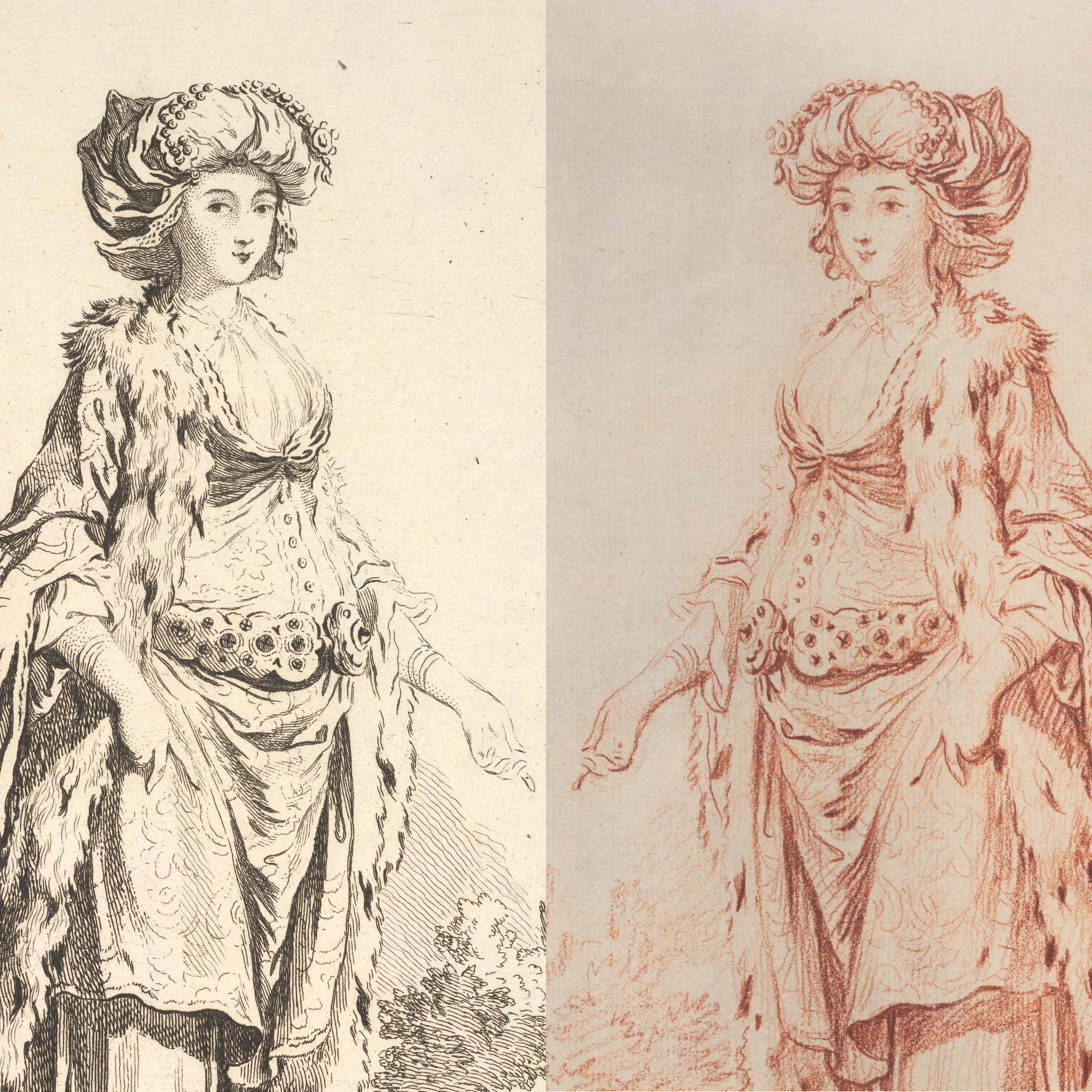The Department of Drawings and Prints boasts more than one million drawings, prints, and illustrated books made in Europe and the Americas from around 1400 to the present day. Because of their number and sensitivity to light, the works can only be exhibited for a limited period and are usually housed in on-site storage facilities. To highlight the vast range of works on paper, the department organizes four rotations a year in the Robert Wood Johnson, Jr. Gallery. Each installation is the product of a collaboration among curators and consists of up to 100 objects grouped by artist, technique, style, period, or subject.
The current installation introduces various new acquisitions and places them in the context of others works from the collection. Among the drawings featured are examples by Antoine Coypel and François Boucher. Also on view is a group of French late eighteenth-century aquatints, several newly acquired. Two new German drawings for church interiors from the Baroque and Neoclassical periods form the impetus for an exploration of drawing traditions that underpin the profession of both architect and furniture maker. In the area of the decorative arts, a newly acquired sample book from the famous Meissen porcelain factory is paired with other designs for on demand luxury tableware from the eighteenth to the early twentieth century.
In conjunction with the special exhibition Manet/Degas, a group of prints and drawings made in Paris around the turn of the nineteenth century explores the dichotomies of life in the city between the so-called beau monde and the lower classes. In the work Guariquen: Images and Words Rican/Structed, Juan Sánchez uses a variety of techniques and materials to address issues of Puerto Rican identity and heritage and the ongoing legacy of colonialism.
Also on view are a group of works by Gego, Marcel Broodthaers, and Raven Chacon that investigate the concepts of line as a carrier of meaning, while a selection of prints made by postwar artists, including Stanley Whitney, Sam Gilliam, McArthur Binion, Tunji Adeniyi-Jones, and Helen Frankenthaler, explore different approaches to color.
